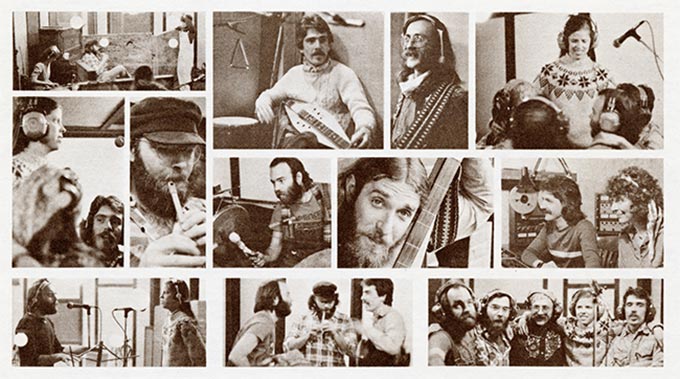The Pacific Rim Dulcimer Project Biscuit City Records BC 1314

This album probably did more to launch the dulcimer into the mainstream that any other single record album. The 1970's saw a popular surge in interest in the instrument. Many folks were trying their hand at building them. Albert's and my book, In Search of the Wild Dulcimer, was out and on it's way to becoming a best seller. Neal Hellman's, Life is Like a Mountain Dulcimer, was out.
Following the publication of In Search, Albert and I brainstormed that there should be a festival around the dulcimer--not as an add-on to other folk gatherings, but separate and dedicated to just the instrument. We published an ad in the emerging Dulcimer Player's News started by Maddie McNeil. One hundred people from across the US and Canada came to the event held on the Washington coast one drizzly weekend in August of 1975 to a Kindred Gathering on the North Pacific Rim.
A year later Bonnie Carol wrote to me and said she had an offer to make a dulcimer album for a small label in Denver, Biscuit City Records, and would I like to do it with her? I countered with the idea that the top players who were at the Pacific Rim Kindred Gathering the year before should all be invited so we could showcase the many different kinds of music we all played.
Michael Rugg, Albert d'Ossche', Neal Hellman, Michael Hubbert and I converged on Bonnie's place outside of Boulder, Colorado in March of 1977. Over a week we recorded originals and folk covers that displayed both our own talents and the diversity of the dulcimer. N.C. Bull was the engineer and sat in with his electric bass on a cut. Jim Ransom, co-owner of the label, along with Bonnie's husband, Max Krimmel, put on guitar here and there. Laura Benson, another co-owner, added some autoharp.
The name for the album came from combining a little-known lp release by Elektra Records featuring four emerging artists-- one of them Richard Fariña-- called the Singer Songwriter Project. Since all of the players on this album were living on the West Coast (as opposed to being from Appalachian Mountain states) and coupled with the fact that we all met on the Pacific Rim, the album title was set.
Each of the players on “PacRim” were to go on to have additional albums of their own. Each also toured independently, adding to the distribution of the album to the non-mainstream market. In the Walnut Valley Occasional, the folks at Winfield, Kansas (home the National Championships) said, “It is likely to be the most important dulcimer recording of contemporary music since the Fariña albums.”
An accompanying book co-written by all of us detailing how to read dulcimer tablature and how to play the tunes, got reviews in major magazines. Pickin' Magazine reviewed it with, “Make no mistake, this is not a book for strict devotees of the traditional mountain dulcimer music any more than David Grisman Quintet is the cup of tea for fans of conventional Bluegrass.” (January 1979)
When Biscuit City stopped producing records they were bought out by Bruce Kaplan of the Flying Fish label in Chicago. Out of the dozens of productions purchased, only the Pacific Rim Dulcimer Project was ever re-released on his label. It's current ownership is in doubt. Most people assume, after Bruce died, Rounder Records of Massachusetts obtained all of the releasing rights to the Flying Fish catalog.
The album has been “pirated” from time to time and put out on CD. It's not clear, rereading the original contract with Biscuit City, if Flying Fish (hence Rounder, et al) own anything but the right to put it out as a vinyl recording since it came out before recording contracts contained language that covered the rights to publish in all future formats. Looking back from an almost 40-year perspective, the record, book and the artists themselves were certainly seminal in the popularization of the dulcimer.
